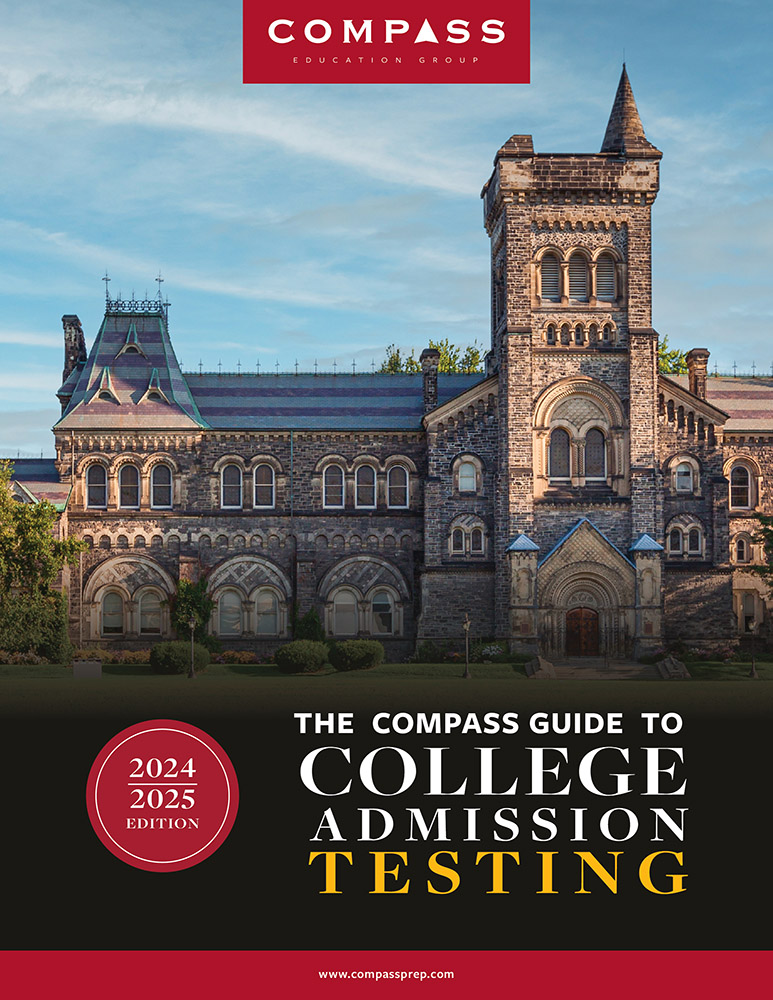
Beginning in March 2024, students will encounter a very different SAT as the College Board takes the test into a purely digital format. With all the changes, you may find it hard to determine which test is your test. Here we go over the basic content, timing, and structure of the digital SAT compared to the paper ACT to help better inform your decision. Below, you’ll find side-by-side tables for easy comparisons, as well as a PDF of this resource.
Digital SAT Overview
The digital SAT begins with two sets, or stages, of Reading and Writing questions that take just over an hour. After a break, the test continues on to two math stages for 70 minutes.
The SAT and ACT are more different than ever before—the tables below demonstrate how much shorter and more focused the SAT is when compared to the ACT. And yet, though the SAT is now a much shorter test, students have much more time per question. The SAT’s 134 minutes to answer 98 questions results in an average of about 1 minute 22 seconds per question, while the ACT’s 175 minutes to answer 215 questions results in an average of about 48 seconds per question. In other words, the SAT gives students 50% more time to answer each question, yet still manages to be 41 minutes shorter.
Paper ACT Overview
The ACT is made up of tests in English, Mathematics, Reading, and Science, and an optional Writing test.
Perhaps the most noticeable content difference between the SAT and the ACT is the inclusion of a Science section on the ACT. Rather than devoting a specific section to science, College Board has peppered the SAT with questions that have science themes or involve charts and graphs.
Students have the option to take the ACT with Writing, but colleges have largely stopped using the score for admission.
Although most students score comparably on the competing exams, some students perform better on the ACT (as some do on the SAT) and find it to their advantage to submit the comparatively higher scores with their applications.
SAT vs. ACT Overview
| Digital SAT | Paper ACT | |
|---|---|---|
| Format | Digital only via a College Board app | Paper-and-Pencil |
| Timing | 2 hours and 14 minutes | 2 hours and 55 minutes |
| Accommodations | All timing accommodations are available. Students whose accommodations require a paper test will still be able to take a paper-and-pencil test. | For information on how to request testing accommodations, read our accommodations blog post. |
| Structure | Stage Adaptive: The difficulty of a section's second stage is based on performance in the first stage; the test tailors the second stage to the student | Static: The test does not change based on a student's performance |
| Sections | 2 Sections, each with 2 Stages – Reading and Writing Stage 1 (32 min, 27 items) – Reading and Writing Stage 2 (32 min, 27 items) – Math Stage 1 (35 min, 22 items) – Math Stage 2 (35 min, 22 items) | 4 Tests – English (45 min, 75 items) – Math (60 minutes, 60 items) – Reading (35 min, 40 items) – Science (35 min, 40 items) – Optional Essay (40 minutes, 1 item) |
| Equating or Unscored Questions | Both the Reading and Writing and the Math tests will have 4 unscored questions mixed in with the scored questions | Students often receive a fifth section of unscored questions that are used for equating purposes |
| Test Scores | 400-1600 Total Score: 200-800 Reading and Writing | 200-800 Math Digital SAT scores are equivalent to paper SAT scores. No new SAT-ACT Concordance is necessary. | 1-36 Composite Score (rounded average of test scores) 1-36 each test: English, Math, Reading, and Science |
| Other Scores | No subscores or cross-test scores | Provides raw performance on content areas such as Conventions of Standard English, Algebra, Craft & Structure, and Interpretation of Data |
| Score Reports | Available days after the exam. Students no longer have access to their questions and answers. | Available 2 weeks after the exam. Students can order Test Information Release (TIR) to receive a digital copy of the multiple-choice test questions for certain administrations. |
| Security | Students have unique tests—an algorithm builds question sets out of a large pool of questions tagged based on qualities ranging from content area to difficulty. | A limited number of form codes are used each administration. Students sign an agreement to keep test questions confidential and are prohibited from using recording devices. |
SAT vs. ACT Reading & Writing
| Digital SAT | Paper ACT | |
|---|---|---|
| Timing | 64 minutes, evenly divided between 2 stages | English: 45 minutes Reading: 35 minutes |
| Passage Format | 54 passage & question sets One short reading passage (25-150 words) per question | English: 5 medium-length passages with 15 questions each Reading: 4 long passages with 10 questions each |
| Reading Organization | Reading questions are in the first half of each stage and are organized by domain and then question type: 1. Craft and Structure (Words in Context, Text Structure and Purpose, Cross-Text Connections) 2. Info and Ideas (Central Ideas and Details, Command of Evidence, Inferences) | The four passages come in the same order and from the same categories: 1. Literary narrative or prose fiction 2. Social sciences 3. Humanities 4. Natural sciences |
| Question Organization | Difficulty increases within each question type | Random |
| Writing/ English Organization | Writing questions are presented in the second half of each Reading and Writing stage and are organized by domain and then question type: 1. Standard English Conventions 2. Info and Ideas (Rhetorical Analysis, Transitions) | The five passages are written to appear like typical high-school level writing Topics range from history reports to personal narrative |
| Question Organization | Difficulty increases within each question type | Chronological |
SAT vs. ACT Math & Science
| Digital SAT | Paper ACT | |
|---|---|---|
| Timing | 70 minutes, evenly divided between 2 stages | 60 minutes |
| Format | 44 questions (including about 11 student-produced response questions) | 60 questions |
| Content Areas | Math content has not changed from the paper SAT but domains have been renamed: 1. Algebra 2. Advanced Math 3. Problem Solving and Data Analysis 4. Geometry and Trigonometry | ACT organizes questions into 3 overlapping areas and 5 question types 1. Preparing for Higher Math: Number & Quantity, Algebra, Functions, Geometry, and Statistics and Probability 2. Integrating Essential Skills 3. Statistics & Probability |
| Ouestion Organization | Difficulty increases within each stage | Difficulty increases within the section |
| Calculator Use | Approved calculators or the testing application's built-in calculator can be used on all math questions | Approved calculators can be used on the Math Test only |
| Science | Reading, Writing, and Math questions ask students to interpret graphs and data tables | 35-minute section: 6 long passages with graphs and 40 questions |

